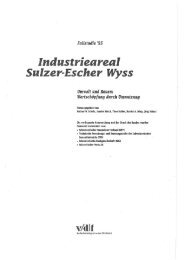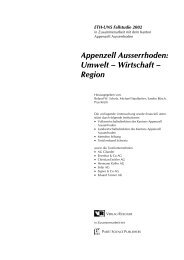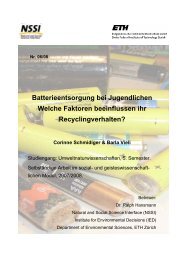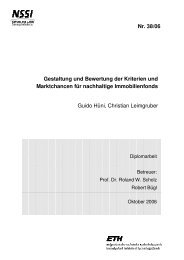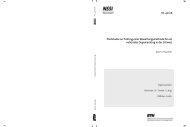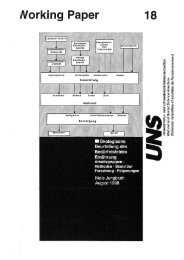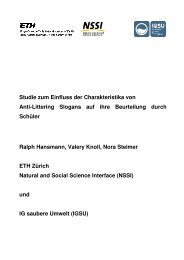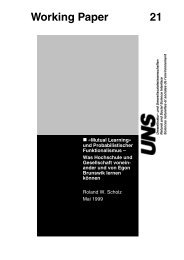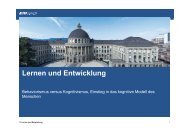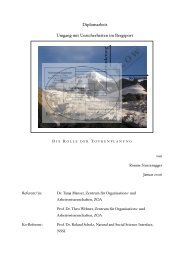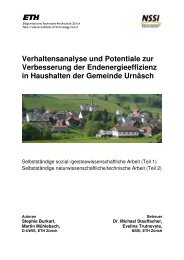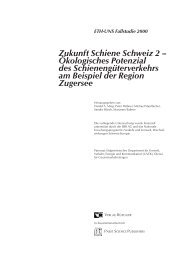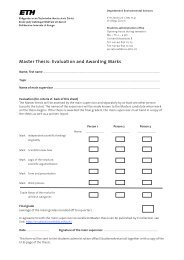Non-road fuel consumption and pollutant emissions ... - BAFU - CH
Non-road fuel consumption and pollutant emissions ... - BAFU - CH
Non-road fuel consumption and pollutant emissions ... - BAFU - CH
You also want an ePaper? Increase the reach of your titles
YUMPU automatically turns print PDFs into web optimized ePapers that Google loves.
4 > Methodology 35<br />
these machine categories has to be adjusted. The load factors effectively attributed to<br />
the various machine categories <strong>and</strong> types are listed in A6 on page 135.<br />
Since the specific <strong>consumption</strong> in particular greatly depends on the load, for diesel<br />
machines that are operated at a mean load that deviates from the ISO measurement<br />
cycle, an adjustment of the <strong>consumption</strong> factor has to be made via the load factor. This<br />
adjustment is calculated on the basis of the following formula:<br />
CF 1 = 2.0095 – 2.1981 · Δ LF + 1.1886 · Δ LF<br />
2<br />
Key:<br />
CF 1 = correction factor for <strong>consumption</strong> if the effective load deviates from<br />
the st<strong>and</strong>ard load (i.e. from ISO 8178-4 cycle C1)<br />
Δ LF = ratio of effective load to st<strong>and</strong>ard load<br />
(i.e. from ISO cycle C1)<br />
The effect of this adjustment is that the specific <strong>consumption</strong> at an effective load factor<br />
of 20% is around 30% higher than at the ISO load factor of 48%.<br />
Due to a lack of background data, this adjustment takes account of <strong>consumption</strong>, but<br />
not <strong>emissions</strong>.<br />
Emission factors are obtained from stationary measurements (ISO C1 measurement<br />
cycle). But if in practice a machine is operated very dynamically (frequently changing<br />
load), this has an influence on its <strong>emissions</strong>, <strong>and</strong> this is taken into account when calculating<br />
the emission levels by applying suitable dynamic operation factors for the various<br />
machine categories <strong>and</strong> types. A7 on page 138 contains a list of machine categories<br />
<strong>and</strong> types with dynamic <strong>pollutant</strong> <strong>emissions</strong>. The applied dynamic operation factors are<br />
based on data produced by the EPA (EPA 2004), <strong>and</strong> are differentiated by emission<br />
stage, since depending on the engine technology concerned the influence of dynamic<br />
operation may be higher, lower or negligible (aspiration engines). Dynamic operation<br />
factors are only used for certain diesel machine types for carbon monoxide <strong>and</strong> particulate<br />
matter.<br />
Dynamic use (CF2)<br />
Tab. 8 > Dynamic operation factors for certain diesel machine types<br />
Dynamic use (CF 2 ).<br />
Emission stage CO HC, NOX PM<br />
Pre-EU A (before 1995, aspiration engines) 1.53 1.00 1.00<br />
From 1996 to EU II 1.53 1.00 1.23<br />
EU IIIA 1.53 1.00 1.47<br />
From EU IIIB 1.00 1.00 1.00



